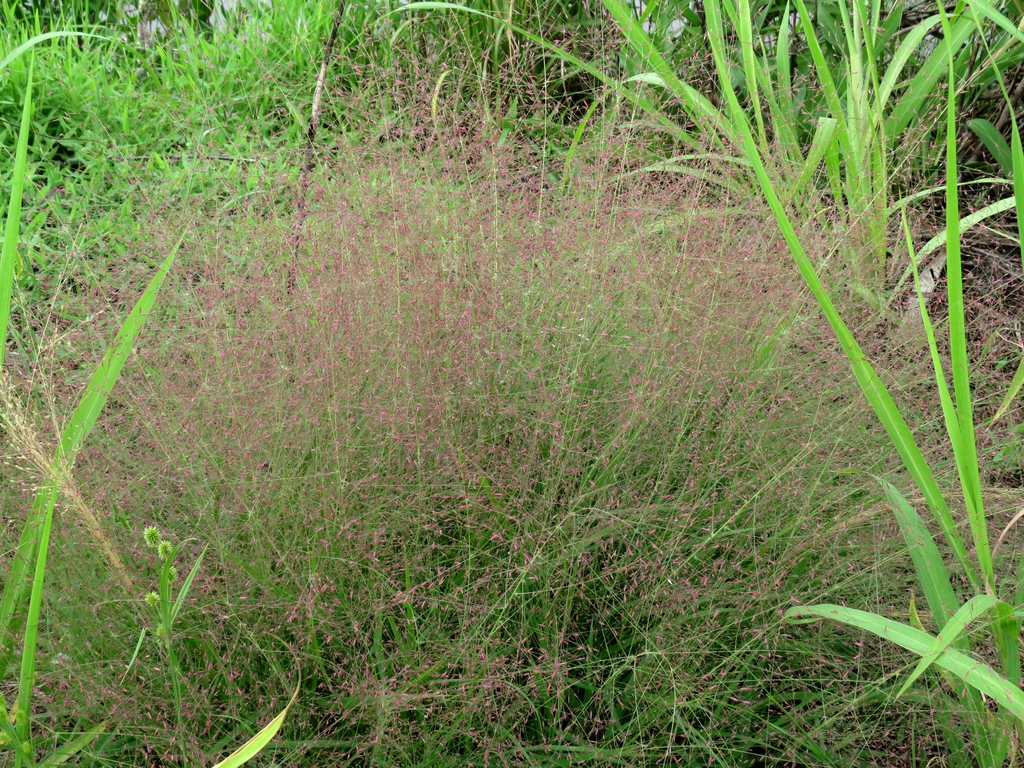Loving That Purple Love Grass
go.ncsu.edu/readext?1093044
en Español / em Português
El inglés es el idioma de control de esta página. En la medida en que haya algún conflicto entre la traducción al inglés y la traducción, el inglés prevalece.
Al hacer clic en el enlace de traducción se activa un servicio de traducción gratuito para convertir la página al español. Al igual que con cualquier traducción por Internet, la conversión no es sensible al contexto y puede que no traduzca el texto en su significado original. NC State Extension no garantiza la exactitud del texto traducido. Por favor, tenga en cuenta que algunas aplicaciones y/o servicios pueden no funcionar como se espera cuando se traducen.
Português
Inglês é o idioma de controle desta página. Na medida que haja algum conflito entre o texto original em Inglês e a tradução, o Inglês prevalece.
Ao clicar no link de tradução, um serviço gratuito de tradução será ativado para converter a página para o Português. Como em qualquer tradução pela internet, a conversão não é sensivel ao contexto e pode não ocorrer a tradução para o significado orginal. O serviço de Extensão da Carolina do Norte (NC State Extension) não garante a exatidão do texto traduzido. Por favor, observe que algumas funções ou serviços podem não funcionar como esperado após a tradução.
English
English is the controlling language of this page. To the extent there is any conflict between the English text and the translation, English controls.
Clicking on the translation link activates a free translation service to convert the page to Spanish. As with any Internet translation, the conversion is not context-sensitive and may not translate the text to its original meaning. NC State Extension does not guarantee the accuracy of the translated text. Please note that some applications and/or services may not function as expected when translated.
Collapse ▲Has that tough spot in your landscape been bugging you lately? You know, that area that stays so hot and dry that nothing seems to want to be there, least of all you at the business end of a water hose. Wouldn’t you love to stop torturing those poor plants you have tried to grow there time after time, and yourself? Well, purple love grass may just be what you have been looking for.
Purple love grass, Eragrostis spectabilis, is a warm-season ornamental grass native to central and eastern North America. It is found in sandy or rocky soils and in woodland sites and does particularly well in hot, sunny locations. Once established, it is tolerant of dry conditions. Its slow spreading underground rhizomes help stabilize the soil making it a good choice for areas prone to erosion.
This low growing plant only reaches about two feet tall. Airy plumes develop above the grassy clump in late summer and seeds begin to form. The reddish-purple blooms are attractive to insects who drink the dew that can collect on the flowers in the fall. The seeds are an important food source for small mammals and birds, including song birds and can be dispersed by them and by the wind into other areas. The dense foliage offers protection for ground-nesting birds, and many parts of the plant can be used for nesting materials for both birds and bees.
Plant purple love grass in spring or fall to help ensure the root system can withstand the onset of summer heat or winter cold. It can be used in borders, as an accent plant or in mass plantings where it really stands out. It can soften a harsh landscape or be planted on slopes and other difficult areas. Consider choosing a site where the blooms can be backlit by the rays of the setting sun of an evening or catch the first glimpse of light in the morning dew. Though the plant becomes dormant in winter, it can bring interest to the garden when covered by the first frost. The plumes are often used to add a textural element to dried floral arrangements.
landscape or be planted on slopes and other difficult areas. Consider choosing a site where the blooms can be backlit by the rays of the setting sun of an evening or catch the first glimpse of light in the morning dew. Though the plant becomes dormant in winter, it can bring interest to the garden when covered by the first frost. The plumes are often used to add a textural element to dried floral arrangements.
To locate a source of purple love grass or other native plants, visit the websites of the NCSU Plant Toolbox, North Carolina Botanical Garden, the N.C. Forest Service, the North Carolina Native Plant Society or your local Extension office.
Purple love grass may go by a delicate name, but it is one tough cookie and you may just end up loving it!
Check out the Extension Master Gardener Volunteers of Lee County’s Lee Regional Fair Booth in 2025 to learn more about other great native plants.
Gail Griffin is an Extension Master Gardener Volunteer for North Carolina Cooperative Extension in Lee County.




